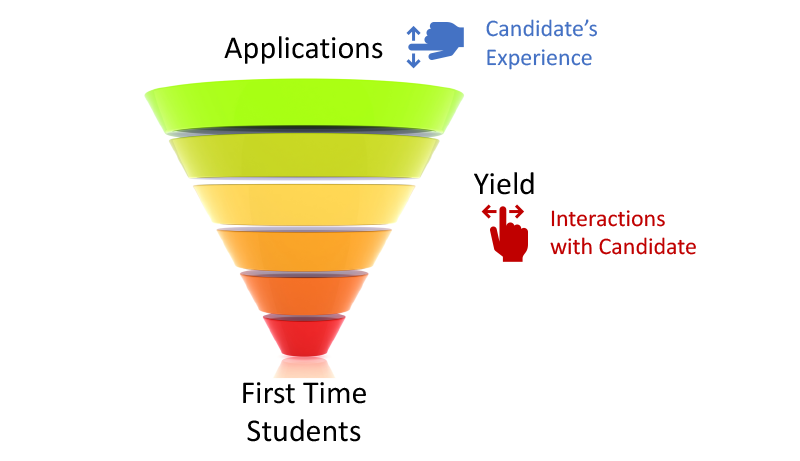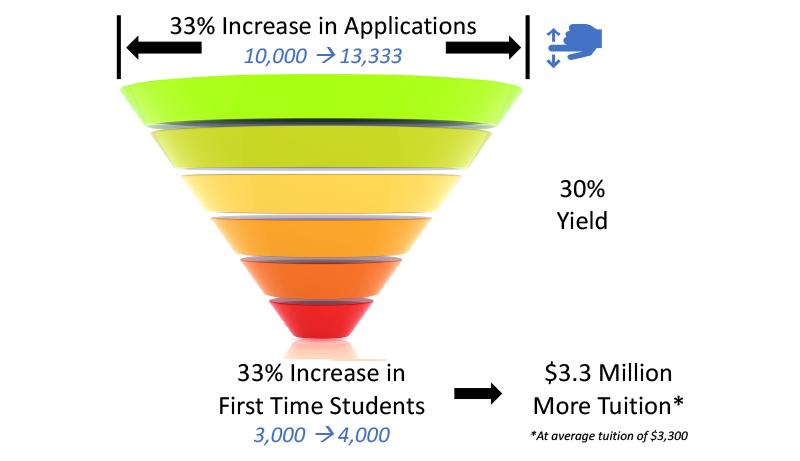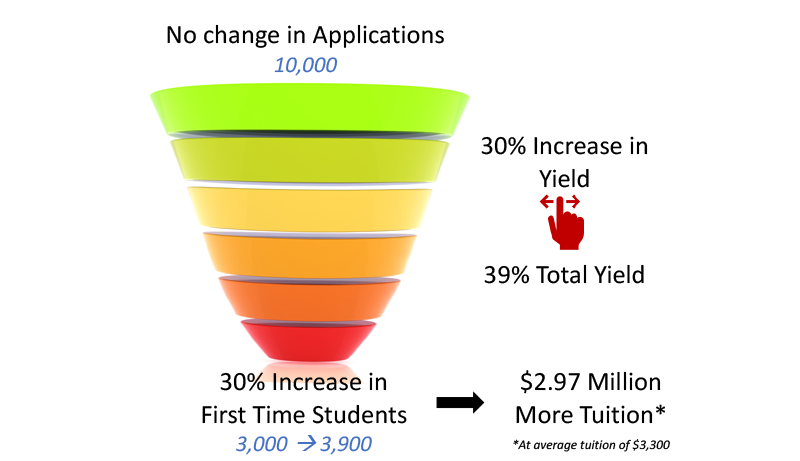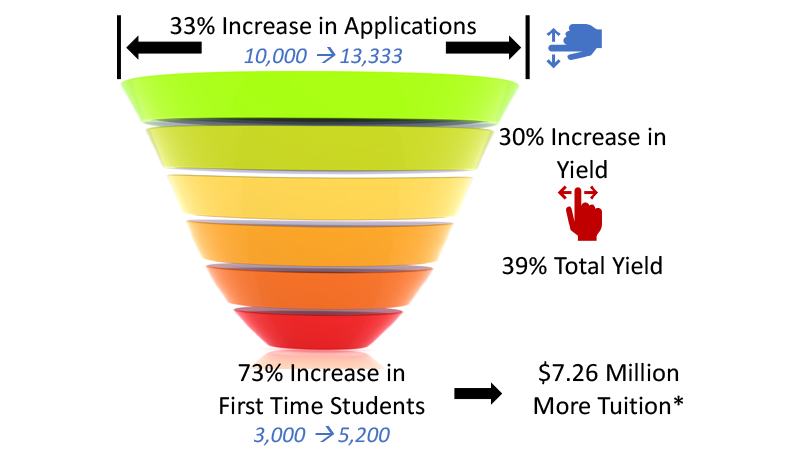Admissions Engagement - the Cost of Maintaining the Status Quo
"We don't have the budget to implement anything new for our admissions"
We've heard this from a number of institutions who are struggling with declining enrollment. In this article, I'd like to describe the fallacy behind this statement -- and illustrate that higher education institutions can't afford to maintain the status quo with their admissions software and processes.
Improving Admissions in a Nutshell

As covered in a previous article, the entire purpose of admissions is to attract qualified candidates to your university and to get them to enroll. Therefore, if you want to increase your enrollment, you need to get more people to complete the admissions process.
Depending on your institution, programs, and types of candidates; your admissions process may have any number of steps within it. However, what is common across all institutions is the key factors in an institution's control to influence these outcomes.
- You can optimize the experience of the candidates at the top of the funnel to increase the number of candidates that participate in the admissions process.
- You can optimize how you interact with candidates as they navigate your admissions process to reduce the number of qualified candidates that abandon the admissions process (falling out of the admissions funnel).
1: Improve the candidate's application experience

Let's start by focusing just on the candidate's experience in applying to the institution. We've seen that by following Mutara best practices, it's relatively straightforward to achieve a 33% increase in application volume. Assuming that historically, your institution processes 10,000 applications, that 33% increase will net you 13,333 applications after your efforts.
If you continue processing applications the way you did before, you will net an additional 33% of first time students. In our example, this will mean that your historical 3,000 first time enrollment will increase to 4,000 students.
If your average tuition is $3,300 / year, this means that the additional 1,000 students will bring $3.3 million additional tuition to your institution.
2: Improve how you interact with candidates

Alternatively, if you focus entirely on improving how your institution interacts with candidates, you can also have a similar influence in your new student enrollment. Our most recent article describes some of the techniques you can follow to accomplish this. We've seen that by following these practices, a 30% increase in yield is very achievable.
If your institution normally processes 10,000 applications each year with an average yield of 30%, you will have 3,000 new student enrollment. If you increase that yield by 30%, your yield is now 39%. This means that your new student enrollment will increase from 3,000 to 3,900 students.
If your average tuition is $3,300 / year, this means that the additional 900 students will bring $2.97 million additional tuition to your institution.
3: Improve both candidate experience and candidate interaction

Finally, if you increase the number of candidates who participate in your admissions process while at the same time reduce the number of qualified candidates who abandon it; you can have an exponential improvement in enrollment. As with prior examples, let's assume an institution starts out with 10,000 applications that are normally processed and they achieve a 30% yield. Improving both the experience and interaction has the following impact:
- A 33% increase in submitted applications gives the institution 13,333 candidates
- A 30% increase in yield gives the institution a total yield of 39% (meaning 39% of the submitted applications ultimately enroll)
- This means that the institution will have 5,200 first time students -- a 73% increase
- At an average annual tuition of $3,300, this means that the additional 2,200 students will generate an additional $7.26 million in tuition funds
Summary
Although each institution is different in terms of application volume, yield, and average tuition; you can see how dramatic the impact can be. The numbers used in this example are about the size of an average sized community college.
In this article, we kept things simple in the following ways:
- We didn't factor in the impact of declining enrollment trends institutions may have. For institutions battling these trends, the impact may be to offset this trend.
- Our analysis was based on first time enrollment and didn't factor how overall enrollment would increase when students continue through their second year of education.
- Our analysis was based on overall enrollment at institutions. For organizations looking to improve enrollment for under-represented groups, elite students, or certain degree programs, the same factors would be in play.
Could your school benefit from increasing enrollment? Don't hesitate to contact us at info@mutarainc.com to learn more.


